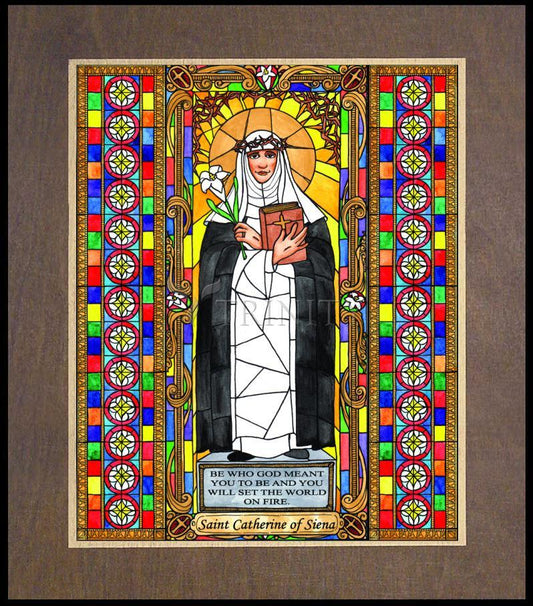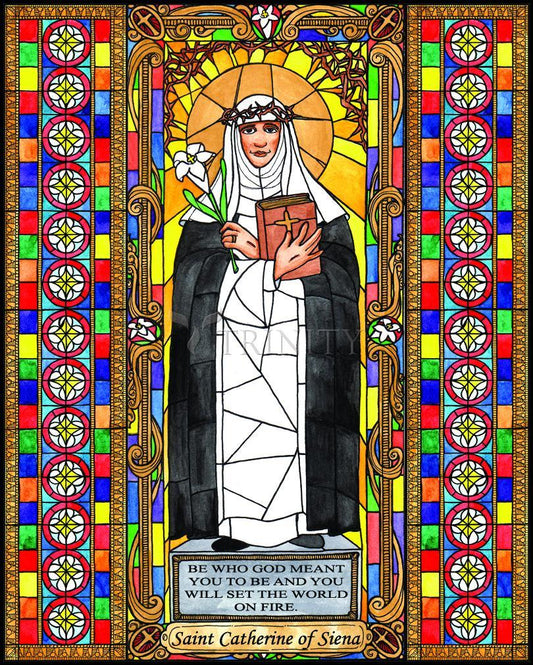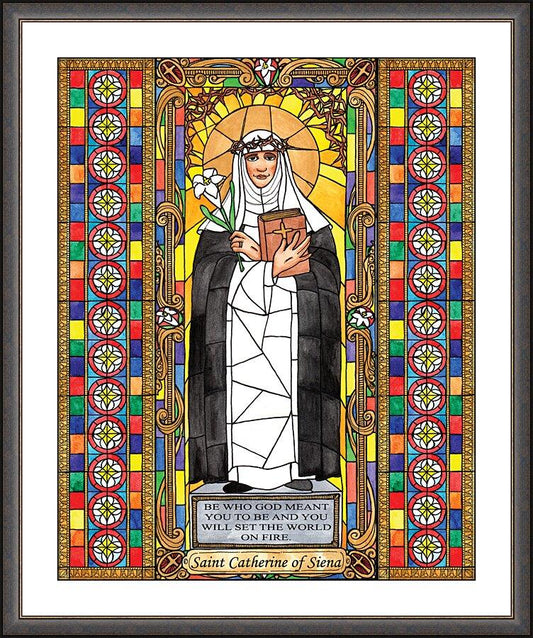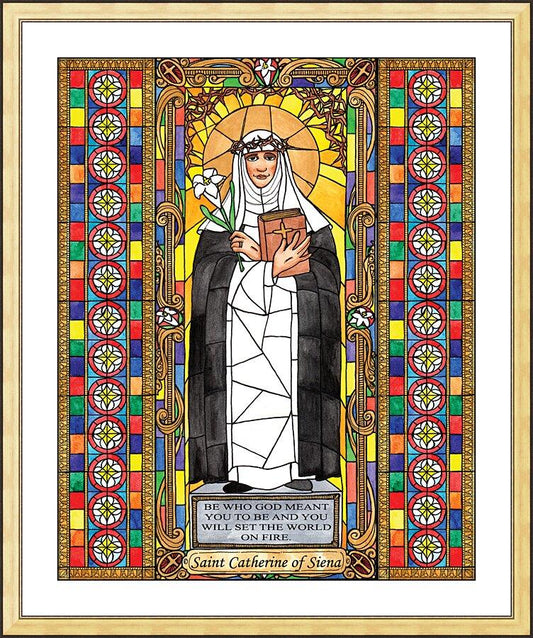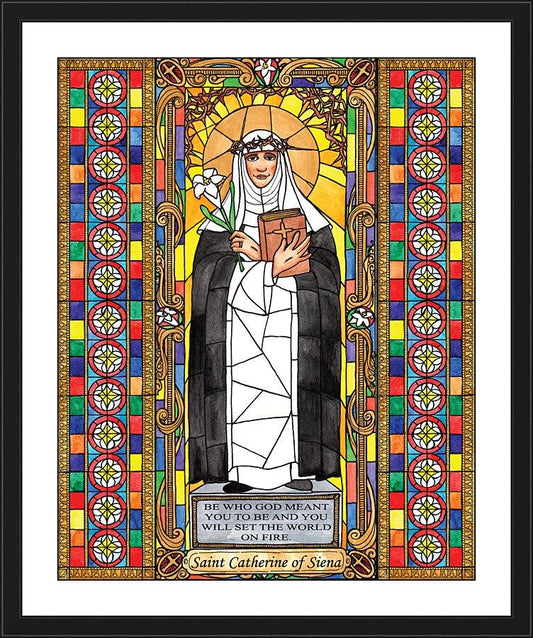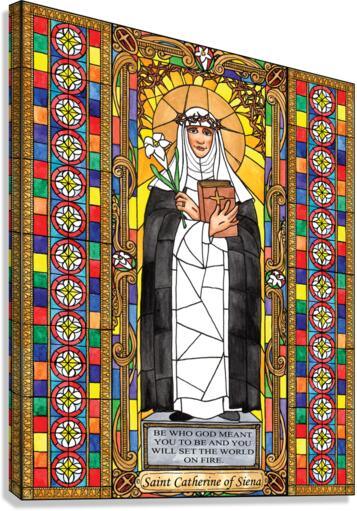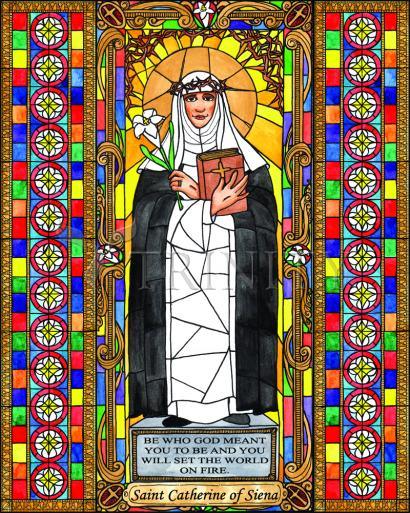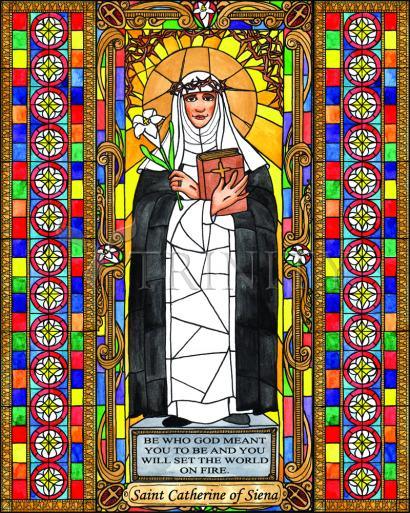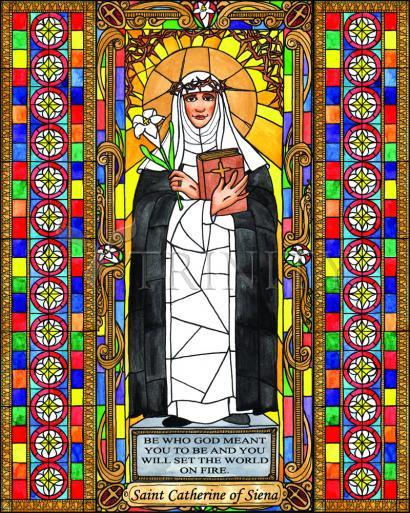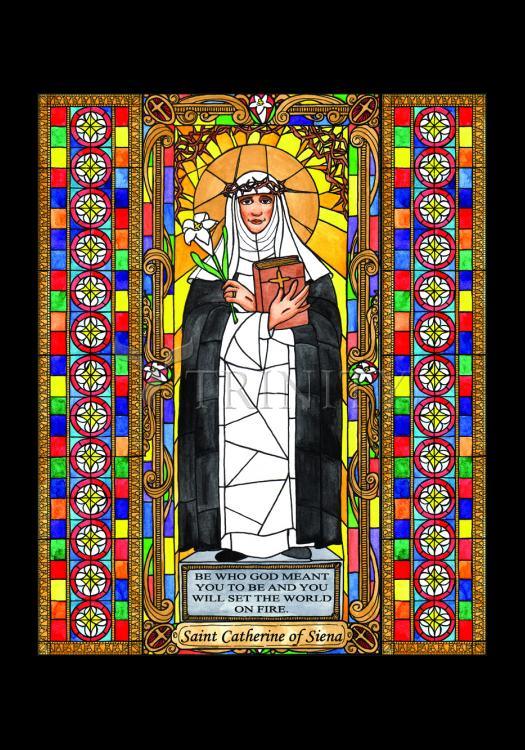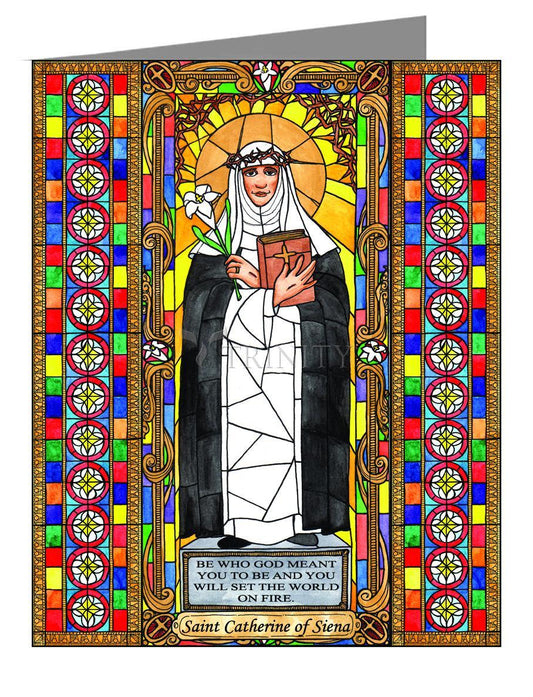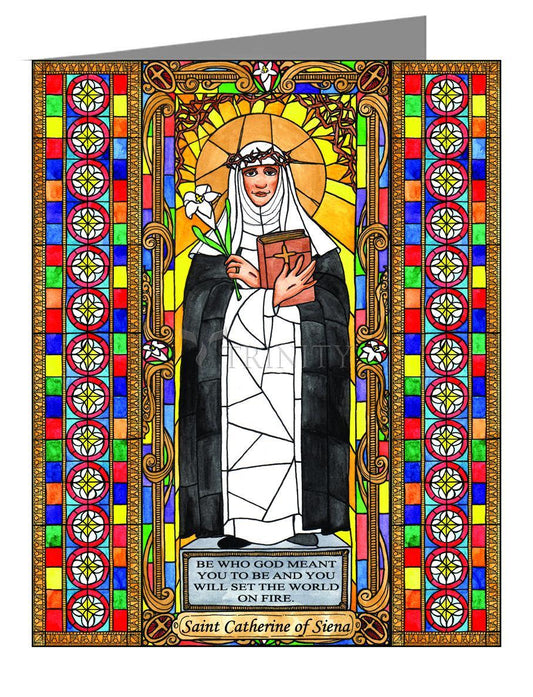ARTIST: Brenda Nippert
ARTWORK NARRATIVE:
Catherine Benincasa was twenty-third of twenty-five children, a gift the world would probably not have received with today's smaller families! Mature and wise beyond her years, her deep faith was rewarded with divine visions at an early age. She wanted to be a nun, but her family refused. Fearing she was becoming obsessed, they tried to keep her busy so she couldn't spend so much time in prayer. Being designated as the family servant did not stop her. As she went about doing her numerous chores, she was united with Jesus in her heart. She created what she called her “heart room” where she could go to be with Him no matter what she was doing on the outside. They eventually reached a compromise and she became a Third Order Dominican while still living at home. Catherine's deep union with God led to many mystical gifts. As her reputation grew she used her influence to bring healing to a Church suffering from a terrible schism. She corresponded with royalty on behalf of the Church and even persuaded Pope Gregory the XI to return the Papacy to Rome.
When she wasn't influencing kings and queens, Catherine could be found among victims of the plague – caring for them, preparing them for death, and burying them with her own hands when no one else would touch them. There was nothing Catherine would not do in God's service. Hers is a story of holding nothing back! Her refusal to accept any limitations that would keep her from Jesus put the power of Heaven at her service and she wielded that power with all the finesse of one of the most amazing women the Church has ever known.
Her feast day is April 29.
Read More
The value Catherine makes central in her short life and which sounds clearly and consistently through her experience is complete surrender to Christ. What is most impressive about her is that she learns to view her surrender to her Lord as a goal to be reached through time.
She was the 23rd child of Jacopo and Lapa Benincasa and grew up as an intelligent, cheerful, and intensely religious person. Catherine disappointed her mother by cutting off her hair as a protest against being overly encouraged to improve her appearance in order to attract a husband. Her father ordered her to be left in peace, and she was given a room of her own for prayer and meditation.
She entered the Dominican Third Order at 18 and spent the next three years in seclusion, prayer, and austerity. Gradually, a group of followers gathered around her"men and women, priests and religious. An active public apostolate grew out of her contemplative life. Her letters, mostly for spiritual instruction and encouragement of her followers, began to take more and more note of public affairs. Opposition and slander resulted from her mixing fearlessly with the world and speaking with the candor and authority of one completely committed to Christ. She was cleared of all charges at the Dominican General Chapter of 1374.
Her public influence reached great heights because of her evident holiness, her membership in the Dominican Third Order, and the deep impression she made on the pope. She worked tirelessly for the crusade against the Turks and for peace between Florence and the pope.
In 1378, the Great Schism began, splitting the allegiance of Christendom between two, then three, popes and putting even saints on opposing sides. Catherine spent the last two years of her life in Rome, in prayer and pleading on behalf of the cause of Pope Urban VI and the unity of the Church. She offered herself as a victim for the Church in its agony. She died surrounded by her "children" and was canonized in 1461.
Catherine ranks high among the mystics and spiritual writers of the Church. In 1939, she and Francis of Assisi were declared co-patrons of Italy. Pope Paul VI named her and Teresa of Avila doctors of the Church in 1970. Her spiritual testament is found in The Dialogue.
Though she lived her life in a faith experience and spirituality far different from that of our own time, Catherine of Siena stands as a companion with us on the Christian journey in her undivided effort to invite the Lord to take flesh in her own life. Events which might make us wince or chuckle or even yawn fill her biographies: a mystical experience at six, childhood betrothal to Christ, stories of harsh asceticism, her frequent ecstatic visions. Still, Catherine lived in an age which did not know the rapid change of 21st-century mobile America. The value of her life for us today lies in her recognition of holiness as a goal to be sought over the course of a lifetime.



